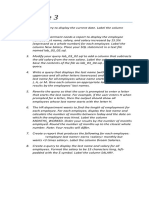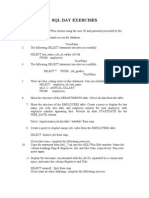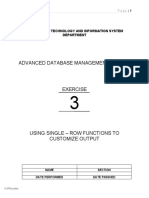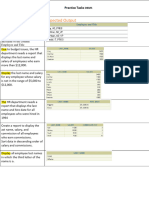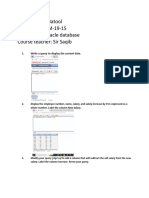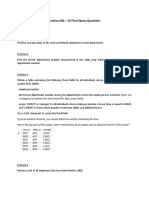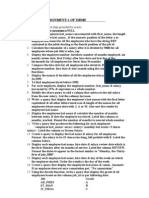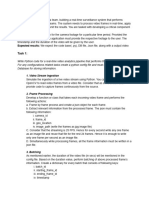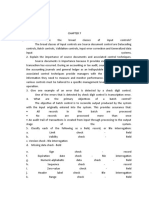Practice 3: Overview
This practice provides a variety of exercises using different functions that are available for
character, number, and date data types.
Practice 3
Part 1
1. Write a query to display the system date. Label the column as Date.
Note: If your database is remotely located in a different time zone, the output will be the
date for the operating system on which the database resides.
2. The HR department needs a report to display the employee number, last name, salary,
and salary increased by 15.5% (expressed as a whole number) for each employee. Label the
column New Salary. Save your SQL statement in a file named lab_03_02.sql.
3. Run your query in the lab_03_02.sql file.
4. Modify your query lab_03_02.sql to add a column that subtracts the old salary from the
new salary. Label the column Increase. Save the contents of the file as lab_03_04.sql. Run the
revised query.
5. Write a query that displays the last name (with the first letter in uppercase and all the
other letters in lowercase) and the length of the last name for all employees whose name starts
with the letters “J,” “A,” or “M.” Give each column an appropriate label. Sort the results by the
employees’ last names.
Rewrite the query so that the user is prompted to enter a letter that the last name starts with.
For example, if the user enters “H” (capitalized) when prompted for a letter, then the output
should show all employees whose last name starts with the letter “H.”
Modify the query such that the case of the entered letter does not affect the output. The
entered letter must be capitalized before being processed by the SELECT query.
6. The HR department wants to find the duration of employment for each employee. For
each employee, display the last name and calculate the number of months between today and
the date on which the employee was hired. Label the column as MONTHS_WORKED. Order your
results by the number of months employed. Round the number of months up to the closest
whole number.
Note: Because this query depends on the date when it was executed, the values in the
MONTHS_WORKED column will differ for you.
If you have time, complete the following exercises:
�7. Create a query to display the last name and salary for all employees. Format the salary
to be 15 characters long, left-padded with the $ symbol. Label the column as SALARY.
8. Create a query that displays the first eight characters of the employees’ last names and
indicates the amounts of their salaries with asterisks. Each asterisk signifies a thousand dollars.
Sort the data in descending order of salary. Label the column as
EMPLOYEES_AND_THEIR_SALARIES.
9. Create a query to display the last name and the number of weeks employed for all
employees in department 90. Label the number of weeks column as TENURE. Truncate the
number of weeks value to 0 decimal places. Show the records in descending order of the
employee’s tenure.
Note: The TENURE value will differ as it depends on the date on which you run the
query.

